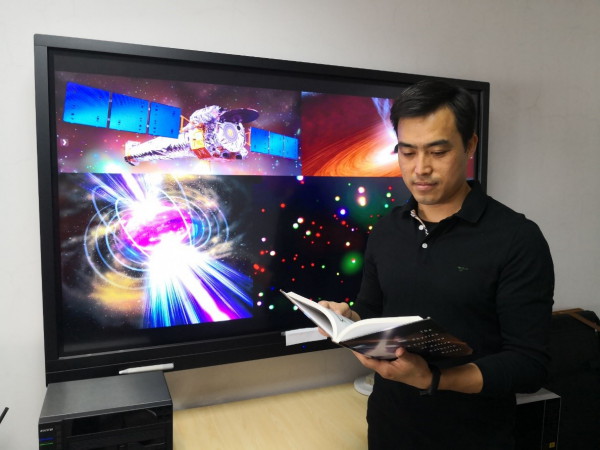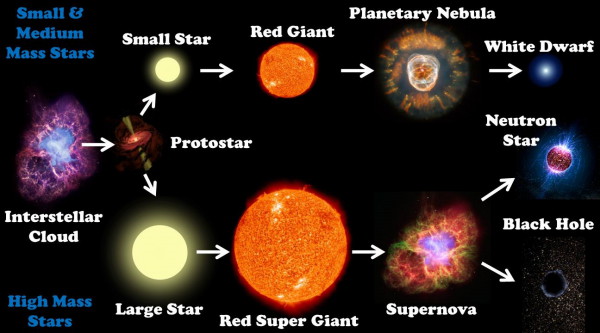6.6 Billion Light Years Away: Neutron Stars Merger Radiance Observed
On April 11th, 2019, an international team led by Professor XUE Yongquan from University of Science and Technology (USTC) announced their observation of a unique X-ray signal from a 6.6 billion light years away survey, which is highly likely powered by a magnetar, as the aftermath of a binary neutron star merger. This discovery was published on Nature.

XUE Yongquan's portrait. The backgound panels shows his research interests: mysterious magnetars, the active galactic nucleus and the 7Ms Chandra Deep Field-South survey. (Image by SHENG Zhenfeng)
Neutron star is one of the most miraculous objects in the universe, yet our grasp of the physics of neutron stars is still fuzzy. For years, astronomers had been wondering about what is the ending of a binary neutron star merger system. Many advocate for becoming a black hole, while some believe a magnetar will be formed.

Life cycle of stars. (Image from the Internet)
The answer is finally revealed by the universe herself. The X-ray transient captured by the group, lasting for 7 hours, gave researchers the evidence about the formation of magnetar. Duration is the key--if the transient is powered by a resulting black hole instead, it could shine for only seconds.
The group also observed that the X-ray transient lies in the outskirts of its host galaxy, like binary neutron star systems usually do, since they are usually kicked away from the center after supernova explosions. This can be taken as supporting evidence that the X-ray transient is indeed powered by the binary neutron star merger.
Meanwhile, researchers calculated the event rate density of similar X-ray transients. The result is consistent with the neutron star merger event rate density robustly inferred from the gravitational wave detection of a binary neutron star merger in 2017.
“The discovery of this new X-ray transient is highly intriguing. Particularly exciting, due to the discovery being made by Chandra with its excellent spatial resolution, is the ability to identify the host galaxy,” one reviewer of this paper said.
This discovery has profound implications for the equation of state of the extremely dense nuclear matter. It helps ruling out a series of theoretical nuclear matter models which are inconsistent with the observations, thus providing new insights into the physics of neutron stars.

XUE Yongquan discussing the physical properties of the discovered magnetar with his PhD student LI Junyao and post-doctoral fellow SUN Mouyuan. (Image by SHENG Zhenfeng)
(Writen by WU Qiran, edited by SHI Xiao, HU Dongyin, USTC News Center)
Back
